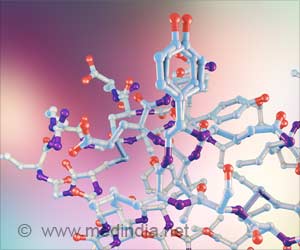In diabetic mice, topically applied simvastatin was found to accelerate wound healing.

"We know that there are several factors involved in delayed wound healing in diabetes," says lead investigator Jun Asai, MD, PhD. "These factors include more rapid apoptosis (cell death) and reduced angiogenesis (growth of new blood vessels). Impaired lymphangiogenesis, or formation of new lymphatic vessels, has also recently been established as a major factor."
Recent studies have shown that statins have uses beyond their cholesterol-lowering effects and can stimulate the growth of new blood vessels when used systemically. This study tested whether topical application of simvastatin could promote angiogenesis and lymphangiogenesis during wound healing in genetically diabetic mice. An advantage of topical application is that a suitable concentration of simvastatin can be applied without risk of serious systemic effects such as kidney damage.
The investigators generated a full-thickness skin wound on the backs of diabetic mice. Each wound was treated with a topical application of either simvastatin in petroleum jelly or petroleum jelly alone. The application was repeated on days four, seven, and ten.
After two weeks, the simvastatin-treated wounds were more than 90% healed, whereas less than 80% were healed in the wounds treated by petroleum jelly alone. The difference in wound closure was greatest on day seven when the simvastatin-treated wounds were 79.26% healed compared with 52.45% in the control group.
"Our results suggested to us that the mechanisms underlying the lymphangiogenic effects of simvastatin in lymphatic endothelial cells (LECs) might be similar to those for angiogenic effects," comments Dr Asai. "However, contrary to our expectation, simvastatin did not promote proliferation of human LECs in vitro. We therefore investigated other possible sources of lymphangiogenic factors."
Advertisement
"This study shows that topical simvastatin significantly accelerates wound recovery by increasing both angiogenesis and lymphangiogenesis. Our observations suggest that the favorable effects of simvastatin on lymphangiogenesis are due both to a direct influence on lymphatics and indirect effects via macrophages homing to the wound. This is a simple strategy that may have significant therapeutic potential for enhancing wound healing in patients with impaired microcirculation, such as that in diabetes. Further investigation is needed to determine its clinical utility", concludes Dr Asai.
Advertisement











